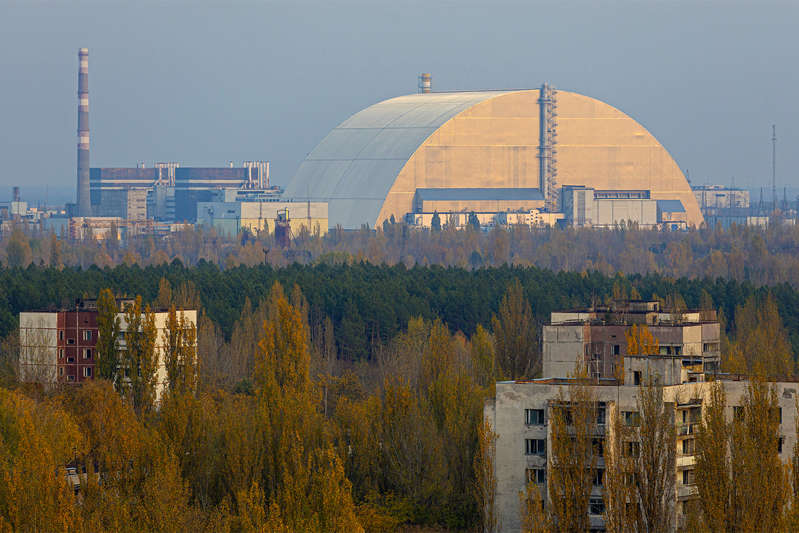
Scientists have recorded nuclear reactions taking place under a new confinement that isolates the destroyed reactor of the Chernobyl nuclear power plant. Buried uranium fuel is a potential hazard, and researchers are trying to determine if the reactions will stop on their own or if urgent action is needed. This is reported in an article published in the journal Science.
According to Anatoly Doroshenko of the Institute for the Safety of Nuclear Power Plants, the sensors are tracking a growing number of neutrons, indicating the progress of nuclear fission reactions. Experts cannot rule out a new accident, but the neutron flux grows slowly, and it may take several years before the worst-case scenario is realized. During this time, scientists hope to come up with measures to counter the threat.
On April 26, 1986, when part of the reactor core of the fourth block melted, the uranium fuel rods, their zirconium cladding, graphite control rods and sand used to extinguish the fire formed corium – a lava-like fuel-containing material (FCM) or “nuclear lava”. It flowed into the basement of the reactor hall, where it froze, forming an “elephant's leg” – an extremely radioactive mass, the presence next to which within 10 minutes could be fatal. In general, the Chernobyl corium contains 170 tons of radioactive uranium, but over time, the radioactivity decreases.
The problem is that the first isolation structure, called the Shelter, allowed rainwater to seep in. Water slows down neutrons, increasing the likelihood of their interaction with uranium nuclei, which led to a sharp increase in the neutron flux as a result of decay. This was initially dealt with by spraying neutron-absorbing gadolinium nitrate, but the spray could not penetrate the basement. It was believed that a new safe confinement would stabilize the situation, but in some places the neutron flux continued to grow anyway. For example, in room 305/2, where tons of FCM are buried under the rubble, the neutron flux has doubled in four years.
The models showed that the increase in radioactivity is associated with the drying of FCM, which, in a paradoxical way, increases the probability of free neutron absorption by uranium nuclei. Experts fear that the fission reaction will accelerate exponentially, leading to an uncontrolled release of nuclear energy. This threatens with the collapse of the “Shelter” and filling the space under the confinement with radioactive dust.
One idea is to develop a robot that can withstand the intense radiation long enough to drill holes in the FCM and insert boron cylinders that will absorb free neutrons.

